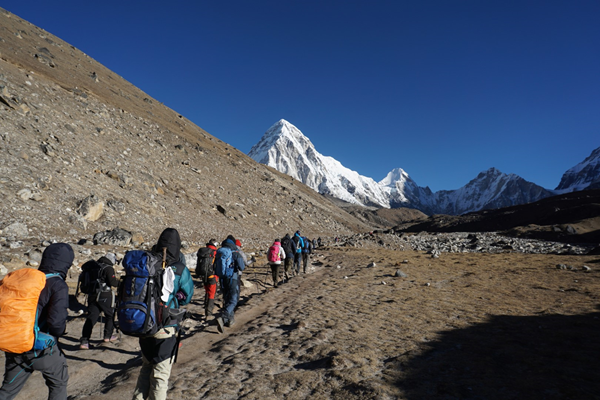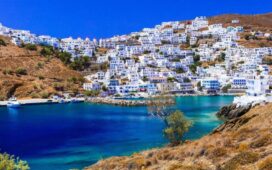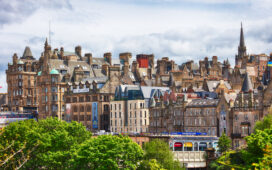Nepal has earned its place as the ultimate trekking destination for adventurers worldwide. Nestled in the heart of the Himalayas, this country offers a unique combination of stunning landscapes, rich cultural heritage, and trekking routes that cater to all levels of experience.
Whether you’re a seasoned trekker aiming to conquer high-altitude peaks or a casual hiker looking for shorter, scenic trails, Nepal provides endless opportunities for exploration. In this blog, we’ll dive into the top reasons why Nepal stands out as the best trekking destination in the world.
1. Home to the World’s Highest Mountains
Nepal is synonymous with the Himalayas and is home to eight of the world’s fourteen 8,000-meter peaks, including the towering Mount Everest (8,848 meters / 29,029 feet) and Kanchenjunga (8,586 meters / 28,169 feet).
Even if you’re not a mountaineer, Nepal allows you to trek to the base camps of some of these mighty peaks. Iconic treks like the Everest Base Camp (EBC) Trek and Annapurna Base Camp (ABC) Trek offer trekkers the chance to get up close to these giants without technical climbing skills.
The feeling of standing at the base of Everest, surrounded by the world’s highest peaks, is something you can only experience in Nepal.
2. Legendary Trekking Trails
Nepal is home to some of the best trekking trails in the world, making it a haven for trekking enthusiasts. The Everest Base Camp Trek is arguably the most famous, taking you through the Khumbu Valley, passing iconic Sherpa villages, and offering awe-inspiring views of Everest, Lhotse, and Ama Dablam.
Another must-do trek is the Annapurna Circuit, which circumnavigates the entire Annapurna massif and provides stunning contrasts of lush valleys, arid highlands, and towering peaks. Whether you’re drawn to the Everest region or the Annapurnas, Nepal’s trails promise adventure and breathtaking landscapes.
3. Off-the-Beaten-Path Adventures
For trekkers who crave solitude and fewer crowds, Nepal offers off-the-beaten-path treks that take you through remote and pristine regions. Treks like the Manaslu Circuit and the Kanchenjunga Base Camp Trek allow you to explore the rugged, untouched wilderness of Nepal.
These routes pass through high mountain passes, isolated villages, and some of the most beautiful landscapes in the Himalayas. The Manaslu Circuit, for example, offers stunning views of Mount Manaslu (8,163 meters / 26,781 feet) and requires special permits, giving you a truly adventurous experience far from the bustling trekking hubs.
4. Unique Camping Treks
If you’re looking for a more immersive trekking experience, Nepal offers remote camping treks that take you deep into unspoiled wilderness areas. Treks like the Upper Dolpo, Kanchenjunga Circuit, and the Dhaulagiri Circuit are perfect for adventurers who want to camp under the stars in isolated locations.
These treks often involve crossing high passes, remote valleys, and areas rich in Tibetan culture, giving trekkers an authentic Himalayan adventure. The Upper Dolpo Trek, for example, takes you through the culturally rich and isolated Dolpo region, made famous by the movie Himalaya. Camping treks in Nepal provide a raw, back-to-nature experience that is hard to find elsewhere.
5. Easy and Accessible Treks
Not all treks in Nepal require intense physical effort or weeks of travel. For those looking for short and easy treks, Nepal offers plenty of options that still deliver stunning mountain views and cultural encounters.
The Ghorepani Poon Hill Trek is one of the most popular short treks, providing breathtaking views of Dhaulagiri (8,167 meters) and Annapurna (8,091 meters), along with a beautiful sunrise over the Himalayas.
Similarly, the Mardi Himal Trek is a shorter trek that offers panoramic views of Machapuchare (6,993 meters), Annapurna South, and the surrounding peaks. These easy treks are perfect for beginners, families, or those with limited time.
6. Rich Cultural Experiences
Nepal’s trekking routes are not just about mountains; they offer a deep dive into the country’s rich cultural heritage. As you trek through villages, you’ll encounter the Sherpas of the Everest region, the Gurungs and Magars of the Annapurnas, and the Tibetan-influenced communities in remote areas like Upper Dolpo and Mustang.
The interaction with local people, staying in traditional tea houses, and experiencing centuries-old Buddhist monasteries and Hindu temples add a unique cultural layer to your trekking adventure. The cultural diversity you’ll experience while trekking in Nepal is one of its most enriching aspects.
7. Well-Established Trekking Infrastructure
Nepal is well-equipped to handle trekkers of all levels, thanks to its extensive trekking infrastructure. Popular trekking routes, such as the Annapurna and Everest regions, offer numerous teahouses and lodges along the way, providing accommodation, meals, and basic amenities.
Even in remote areas, you’ll find well-established trails and guides to assist you. The Nepal Tourism Board and local trekking agencies ensure that visitors are well taken care of, with accessible guides, porters, and permits. This infrastructure makes trekking in Nepal both safe and comfortable, allowing trekkers to focus on the experience without worrying about logistics.
8. Trekking for All Fitness Levels
Nepal caters to trekkers of all fitness levels, offering everything from easy, low-altitude hikes to challenging high-altitude treks. Whether you’re a beginner or a seasoned trekker, there’s a route for you.
If you’re new to trekking, options like the Ghorepani Poon Hill and Mardi Himal Trek offer scenic views without the need for extreme endurance.
For those seeking more challenge, treks like the Everest Three Passes Trek or the Dhaulagiri Circuit will test your physical limits. Nepal’s wide range of trekking options ensures that every trekker can find a trail that suits their fitness level.
9. Year-Round Trekking Possibilities
One of the advantages of trekking in Nepal is the year-round trekking possibilities. While the best times to trek are autumn (September to November) and spring (March to May) due to favorable weather conditions and clear skies, some treks can also be done in winter and the monsoon season.
Treks like Upper Mustang and Dolpo are in rain-shadow areas and can be trekked during the monsoon. For those who enjoy winter trekking, shorter routes like Mardi Himal and Ghorepani Poon Hill offer clear skies and fewer crowds during the colder months.
10. A Gateway to Adventure and Nature
Finally, Nepal is more than just a trekking destination; it’s a gateway to adventure. In addition to trekking, you can engage in mountain climbing, paragliding, rafting, wildlife safaris, and cultural tours.
The diversity of activities makes Nepal a holistic adventure destination where you can combine your trekking journey with other experiences like exploring Chitwan National Park or going on a wildlife safari in Bardia. Whether you’re seeking an adrenaline rush or a peaceful escape into nature, Nepal has something for every type of traveler.
Conclusion
With its unparalleled mountain landscapes, legendary trekking routes, rich cultural experiences, and a trekking infrastructure that caters to all, it’s no wonder that Nepal is the best destination for trekking.
Whether you’re drawn by the allure of Everest Base Camp, the solitude of Manaslu, or the cultural richness of Upper Dolpo, Nepal offers a once-in-a-lifetime trekking experience.
No matter your trekking experience or fitness level, Nepal has something to offer every adventurer. It’s a place where the journey is as rewarding as the destination, and the mountains are calling!





